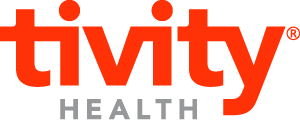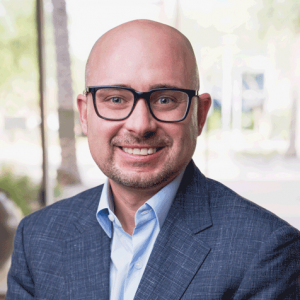
When you look at the sheer numbers alone—approximately 10,000 baby boomers are aging into Medicare every day—it’s no surprise that as people live longer, experience life transitions such as retirement, losing a spouse, becoming an empty nester and facing age-related health problems, they have higher risk for social isolation and loneliness than previous generations – a trend, experts say, is a modern-day epidemic.
According to a July 2012 study in JAMA Internal Medicine, 43% of older adults experience loneliness, or feeling a lack of companionship. Up to 50% of those 60 and older are at risk for social isolation, or having few relationships and limited social contact, which often leads to feelings of loneliness.
Social isolation and loneliness are complicated, and there can be multiple risk factors at play.
What’s more, the two issues don’t always go hand in hand. An older adult may live alone but not feel lonely, while someone else can feel lonely despite having family, friends and community around them. In fact, 63% of people who feel lonely are married, the same study found.
For Medicare Advantage plans, managing risk in this population is challenging. Older adults who experience social isolation and loneliness are more likely to have adverse physical and mental health outcomes and a higher risk for premature death. As a result, costs for this population are high: $1,608 higher per year—or $6.7 billion in excess cost annually, a 2017 report by AARP found.
Yet tackling social isolation and loneliness is still relatively new for Medicare Advantage plans. It has only been in the last several years that they have started to address it and identify solutions to help them achieve their health and quality goals.
Today, most organizations hoping to combat the problem take a generalized approach of educating members and connecting them to resources. Others implement ways to find at-risk members, but many struggle to identify effective solutions. Few organizations take a comprehensive approach to identify and engage members.
By using a data-driven approach, health plans can identify the right population, understand the risk factors and needs to effectively engage individuals with the right solutions and develop high-value partnerships that can expand the network of solutions.
A more comprehensive approach that considers each of these components will optimize the ability to engage and connect people at risk for social isolation and loneliness, improve health outcomes and lower healthcare costs.
How to Find Who Is at Risk? It’s Easier Said Than Done
There’s no simple, clear-cut way to identify members at-risk. For starters, there are a range of risk factors for social isolation such as chronic health conditions, life transitions, environment, socio-economic status and personal attributes. There also isn’t a single data set that accounts for all of this information.
Self-identification is another obstacle. According to a 2018 study by AARP, at least 87% of people over 60 understand the risk of social isolation and loneliness and the health impacts; however, less than 16% are concerned they will become socially isolated.
For those who do, 76% (65 and older) say they would find it hard to admit feeling lonely because they don’t want to be a burden to anyone, a U.K. survey found. Plus, just like mental illness, there is a stigma attached to talking about social isolation and loneliness.
Therefore, the lack of perceived risk, the unwillingness to admit how they feel and the social stigma means that only a small percentage of the at risk population will take advantage of interventions on their own.
Solving Social Isolation and Loneliness Requires a Data-Driven Approach
Unfortunately, most of the solutions available to address social isolation and loneliness fall short.
The most robust way to effectively address these issues at scale is a data-driven solution that identifies members at risk, understands the barriers that prevent them from being socially engaged and follows through with targeted interventions.
At Tivity Health, we have developed the Identification & Personalization Engine, a propriety algorithm combined with our predictive engagement model to both identify the socially isolated population and then prioritize tailored hyper-focused engagement opportunities and solutions that best meet our members’ needs.
The algorithm uses medical claims data, demographics and consumer data to identify combinations (or clusters) of factors that are indicative of risk. It segments a health plan’s population into different risk categories based on individual risk factors and cost. This also allows plans to target the highest opportunity population, and as a result, they can offer higher touch outreach with more precision to maximize engagement.
The next step is to use algorithm-generated insights about risk level and barriers to engagement, integrating member persona and engagement-propensity, to prioritize the offerings to help that individual become—and stay—socially connected.
For example, a first-touch may start with discounted hearing aids to help the person feel more comfortable in interacting socially, or to encourage on-demand fitness classes to help them gain confidence before joining a gym or taking classes with a group. Each member’s case is unique of course, but the data provided by the algorithm can help plans approach members on an individualized basis, better informing marketing campaigns and messaging to engage more members.
Although engagement is critical to any program, it’s important to have an effective program that has proven health outcomes. According to a 2018 study Tivity Health conducted with the MIT AgeLab, of 3,000 Medicare Advantage members who participated in SilverSneakers®, significantly fewer members suffered from social isolation (20% less) and loneliness (25% less). In fact, the reduced social isolation and loneliness rates were directly associated with better health of participants, above and beyond the health benefits of fitness.
Using a data-driven engagement approach, combined with an effective suite of programs, Medicare Advantage plans can identify at-risk members with the highest opportunity to drive outcomes through engagement, understand what drives cost and utilization, and make informed decisions about the right solutions at the right time.
Through our Identification and Personalization Engine, SilverSneakers program, additional offerings that remove barriers to engagement, and our collaborative partnerships that provide social connections outside of the gym, Tivity Health is committed to improving the health of Medicare Advantage members by solving social isolation and loneliness.
To learn more about our solutions, contact us today.














